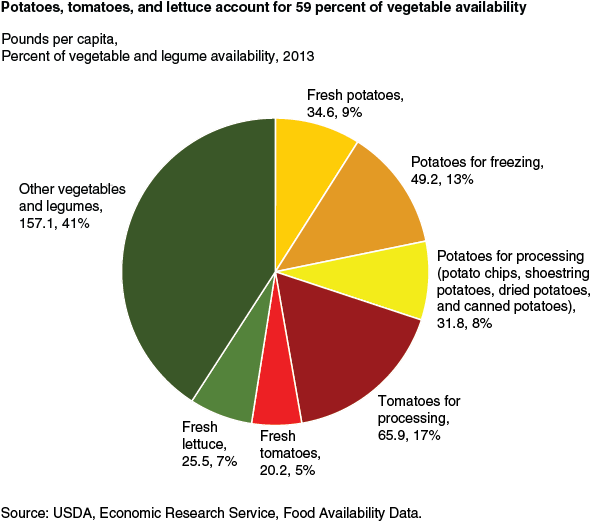The USDA Says Americans Only Eat 3 Types Of Vegetables

Growing up, I’m sure you heard the phrase, “Eat your vegetables” at least once, right? Well, you might have scoffed at those veggies, perhaps scraping them off the plate onto the floor for the dog to eat. But, eventually, that dog would get sick of eating the same vegetables over and over again, as, according to the U.S. Department of Agriculture (USDA), Americans only eat three types of vegetables.
If you had to guess what those three vegetables were, could you? I’ll give you two: tomatoes and lettuce, two key components to everyone’s “healthy” meal, a salad. But what about the third? Carrots, perhaps, or maybe the up-and-coming kale? Nope and nope. The third most eaten vegetable is actually the potato.
The USDA found that all the other vegetables or legumes available to Americans only made up 40 percent of their diet, with no single vegetable or legume reaching more than 5 percent consumed. Breaking it down even further, the USDA found that there was not much variation with how we consumed the big three vegetables. The data contains only white potatoes, two-thirds of which were turned into French fries and potato chips, while tomatoes were mostly eaten in sauces or as an ingredient in another dish. Lettuce was the only one that was consumed fresh — probably because there isn’t much you can do with lettuce, no matter how good of a cook you are.
You might want to blame your parents for the same potato, tomato, lettuce combination every night for dinner. Vegetable consumption is more diverse than it was 40 years ago, when 67 percent of Americans' vegetable diet was potato, tomato, and lettuce, but we actually have more readily available fresh tomato and lettuce now than we did then. Only fresh potato availability has switched, with 61.8 pounds available per person in 1970, compared to 34.6 pounds available in 2013.
With all of this data regarding how we eat our veggies, you’d think we would at least eat all of them, right? Unfortunately, that isn’t the case. Vegetables are among the most thrown-away foods, according to a study, with 41 percent of Americans not even thinking about how much food they waste per year.
Variety is the spice of life, and variety in your eating habits can be greatly beneficial to your health. It’ll help with your fiber intake, benefit your cardiovascular system, lower your risk of cancer and even mixing it up for you kids can get them to eat more.




























